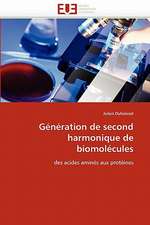Handbook of Chemical and Biological Sensors
Editat de R.F Taylor, Jerome S. Schultzen Limba Engleză Hardback – 1996
Preț: 4946.33 lei
Preț vechi: 6032.11 lei
-18% Nou
Puncte Express: 7419
Preț estimativ în valută:
946.68€ • 984.51$ • 792.18£
946.68€ • 984.51$ • 792.18£
Carte tipărită la comandă
Livrare economică 15-29 martie
Preluare comenzi: 021 569.72.76
Specificații
ISBN-13: 9780750303231
ISBN-10: 0750303239
Pagini: 616
Ilustrații: 1
Dimensiuni: 138 x 216 x 35 mm
Greutate: 1.18 kg
Ediția:1
Editura: CRC Press
Colecția CRC Press
Locul publicării:Boca Raton, United States
ISBN-10: 0750303239
Pagini: 616
Ilustrații: 1
Dimensiuni: 138 x 216 x 35 mm
Greutate: 1.18 kg
Ediția:1
Editura: CRC Press
Colecția CRC Press
Locul publicării:Boca Raton, United States
Public țintă
ProfessionalCuprins
Fundamentals of sensor technology. Transduction science and technology. Sensor surface chemistry and biology. Design and fabrication techniques. Application domains for chemical and biological sensors. The market for chemical and biological sensors. References and bibliography. Index.
Recenzii
"…an essential guide in this challenging field."
-Journal of Medical Engineering and Technology
-Journal of Medical Engineering and Technology
Descriere
This fully inclusive handbook focuses on the development of sensors to recognize substances rather than physical quantities. It examines devices that use a biological sensing element to detect and measure chemical and biological species as well as those that use a synthetic element to achieve a similar result. A first port of call for anyone with a specific interest, question, or problem relating to this area, this comprehensive source of reference serves as a guide for practicing scientists and as a text for many graduate courses. It presents relevant physics to chemists, chemistry to materials scientists, materials science to electronic engineers, and fabrication technology to all of the above.




























